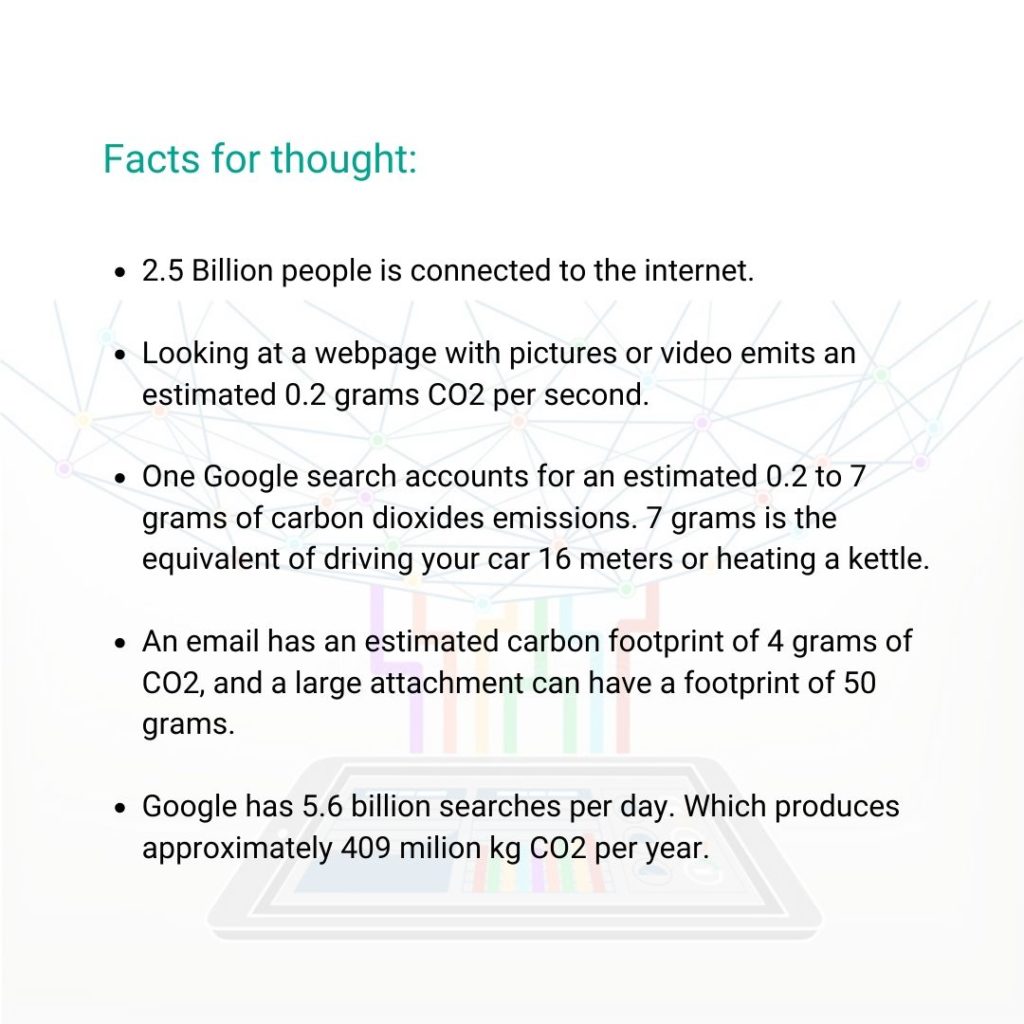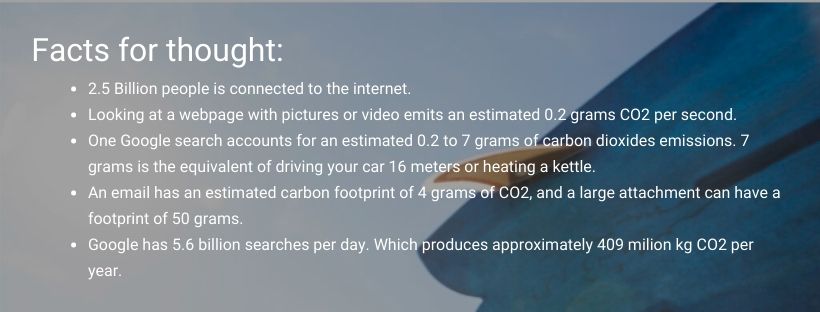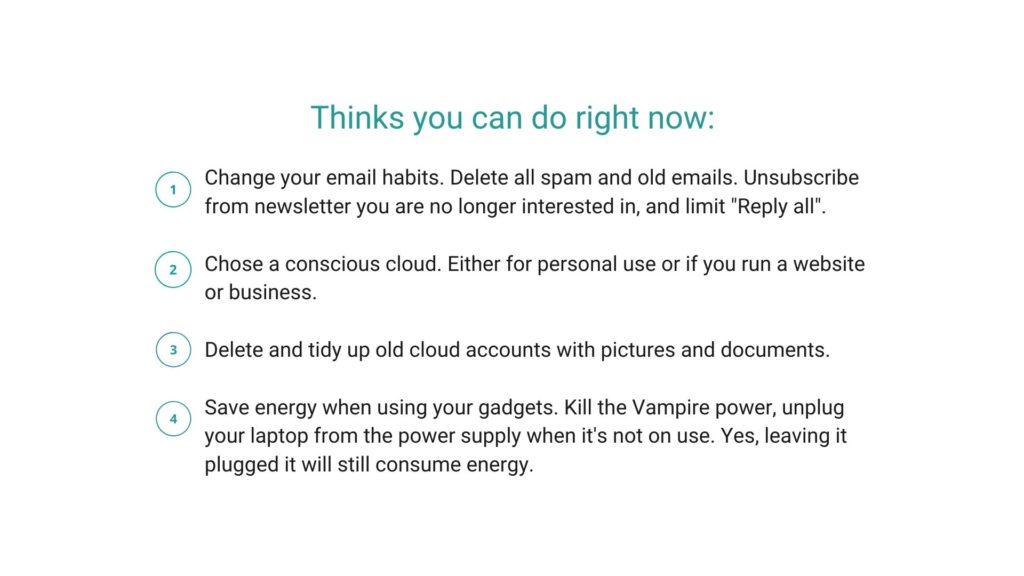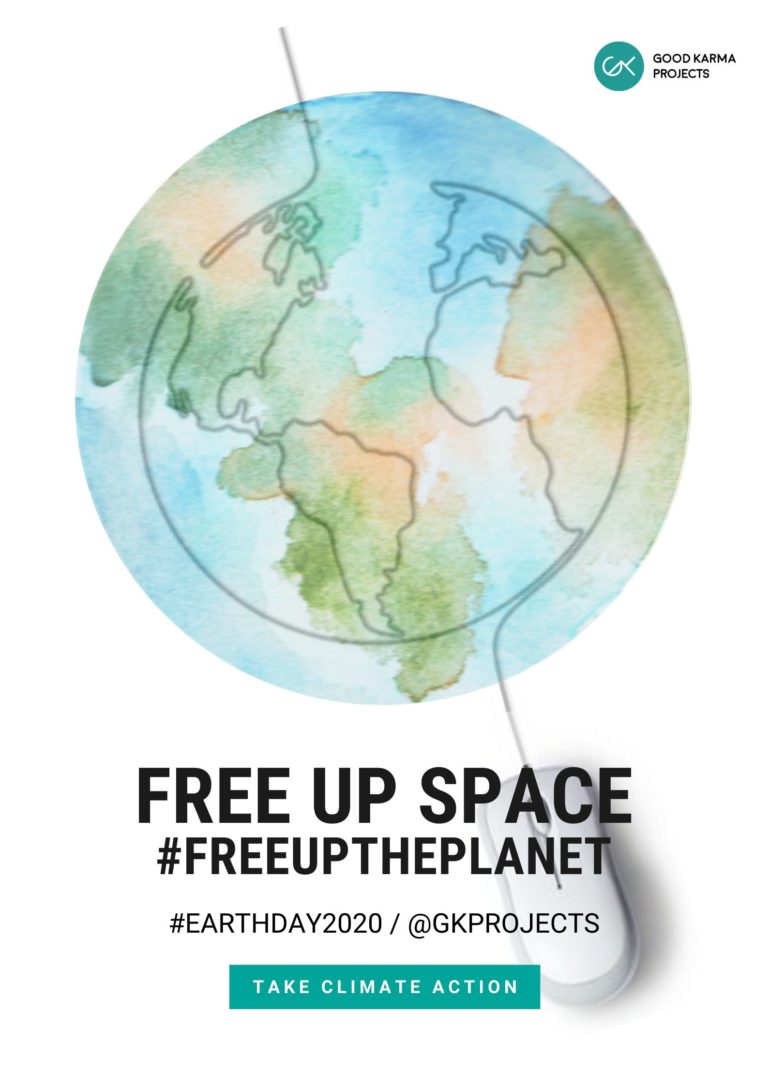Mientras no estamos surfeando las olas, estamos navegando por la web y derrochando correos electrónicos y textos.
Hay algunas cosas que sabemos, sin lugar a dudas, que dañan el medio ambiente, como los vehículos que consumen mucha gasolina, las plantas de carbón, los plásticos de un solo uso y los pedos de vaca. Pero hay otras cosas en las que no pensamos mucho y que también tienen el potencial de hacer un daño significativo al medio ambiente, como todos tus datos.
Aunque la mayoría de los/as activistas del cambio climático se centran en limitar las emisiones de los sectores de la automoción, la aviación y la energía, es la industria de las comunicaciones la que va camino de generar más emisiones de carbono que todos los sectores mencionados.
¿Te has preguntado alguna vez cuál es el impacto de navegar por Internet, enviar correos electrónicos, subir publicaciones a Instagram y almacenar nuestros archivos en “la nube”?
Con los conocimientos que el equipo de GK obtuvo se demuestra que enviar 65 correos electrónicos equivale aproximadamente a recorrer 1 km en coche. Puede parecer poco, pero si se compara a escala mundial en términos de emisiones de CO2, sería lo mismo que 7 millones de coches más en las carreteras. Nos planteamos cómo podemos actuar en otro ámbito de nuestras vidas.


¿Cómo generan nuestros correos electrónicos el CO2?
En cuanto enviamos un correo electrónico nos desvinculamos de dónde va y de lo que se necesita para procesarlo en unos segundos antes de que llegue a su destino. Esto no significa que nuestros queridos correos electrónicos estén flotando en el espacio.
Todos los programas y películas que transmites, los documentos importantes a los que necesitas acceder en cualquier lugar, toda la información que has subido a las redes sociales… pueden ocupar poco o ningún espacio en tus dispositivos, pero todos esos datos tienen que ir a alguna parte. Ese lugar suelen ser los centros de datos, enormes edificios ocupados por nada más que una fila tras otra de servidores informáticos que funcionan sin parar para asegurarse de que, cuando necesites recuperar una foto almacenada en la nube, puedas acceder a ella de inmediato. Los centros de datos son los héroes de los que rara vez se habla y que hacen posible las increíbles comodidades modernas que nos ha proporcionado la tecnología. Pero tienen un coste.
Centro de datos y consumo de energía
En 2016, se informó de que los centros de datos del mundo utilizaron más que el consumo total de electricidad de Gran Bretaña: 416,2 teravatios-hora, significativamente más que los 300 teravatios-hora del Reino Unido. Con un tres por ciento del suministro mundial de electricidad y un dos por ciento de las emisiones totales de gases de efecto invernadero, los centros de datos tienen la misma huella de carbono que la industria de la aviación.
Un estudio reciente menciona que los centros de datos representaron alrededor de 205 teravatios-hora de uso de electricidad en 2018, que es aproximadamente el 1% de todo el consumo de electricidad en el mundo, según el informe. (Esta cifra es muy inferior a la que se cita a menudo, según la cual los centros de datos consumen el 2% de la electricidad mundial).
En cualquier caso, hemos hecho nuestros números. En la actualidad, los centros de datos del mundo utilizan más que el consumo total de electricidad de Noruega, que es de 122,20 TWh.
En la actualidad, los centros de datos del mundo utilizan más que el consumo total de electricidad de Noruega.
Internet, el correo electrónico y los servicios basados en la nube han reducido toneladas de recursos físicos como el papel.
Pero las emisiones de carbono producidas por la alimentación, la fabricación y la refrigeración de ordenadores, teléfonos inteligentes y centros de datos pueden sumar. La ecologización de Internet es el siguiente esfuerzo en nuestra era hiperconectada.
Enlaces y referencias:
Clicking clean. Who is winning the race to build a green internet? – Greenpeace
Andrae, A. & Edler, T. Challenges 6, 117–157 (2015)
The carbon footprint of the internet – Climate Care




